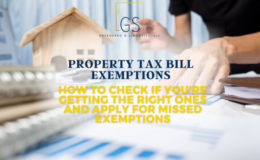If you are in the market for a new home, you may wonder if you should buy previously owned or newly constructed property. While there are many considerations related to floor plans, fixtures, design, and neighborhood (just to name a few!) I am going to focus on some of the legal considerations and differences between the two.
Waiting Period
The first thing to consider when deciding between a newly constructed home and a previously owned home is how long you’re willing to wait! The waiting period for purchasing a previously owned home is typically much shorter than new construction homes — largely because you must wait for your new home to be constructed!
When purchasing a previously owned home, you typically close within 30-60 days, depending on whether you are getting financing and, if you are financing, what type of loan you receive. For example, FHA and VA loans can take longer to get to closing than conventional loans. Since there are many more moving parts, new construction can take several months to upwards of a year.
Repair Requests vs. Punch Lists
Another big difference between purchasing a previously owned home vs. a newly constructed one is the difference between repair requests and Punch Lists. When purchasing a previously owned home, it’s common to do an inspection and request repairs based on that inspection.
Per the standard contract, you can technically only request repairs of the major components of the Real Estate, including central heating and cooling systems, plumbing and well system, electric system, roof, walls, windows, doors, ceilings, floors, appliances, and foundations. A major component is deemed in operating condition if it is still performing the function for which it is intended, even if it is near the end of its life or very old. Minor repairs, routine maintenance, painting, and decorating are not considered defects and are not considered proper requests.
On the other hand, the Punch List in a new construction home is much more inclusive. A Punch List is the list of work that still needs to be completed or that was done incorrectly and must be fixed. When buying a newly constructed home, you expect the home to meet certain specifications and requirements. If the home doesn’t meet these requirements, you can request they be added to the Punch List. This can range from wrong paint, damaged floors, or non-functional appliances.
Taxes
In Illinois, taxes are paid one year after they are assessed – so in 2023, you will be paying taxes for 2022. This means you want to ensure the seller is paying their fair share of taxes when they lived in the house. With a previously owned home, we have a pretty good system to estimate the taxes. Although not to the very cent, we can generally get you in a fair range of what you will end up owing on your tax bill. We prorate taxes – so we take the tax owed from the most recently available bill and prorate based on the days the seller lived in the home (i.e. until the closing date). The percentage used for calculating the prorated amount can change if the calculations are done in a re-assessment year — in such a case, we may ask for an increase if your new property had a substantial increase in value because that lends itself to a higher tax bill.
There is no way to know what the tax bill will be for new construction because the tax bill will be based on the property or vacant lot before the new construction is built. Typically, the builder will take responsibility for paying the taxes they are responsible for. In some circumstances, we may put a certain amount of money in escrow to ensure they are properly paid.
Get The Right Support For Your Decision
Purchasing a new home is a big decision, and it can start to feel overwhelming when you have to learn about things like repair requests, Punch Lists, and taxes. If you have any questions about the legal aspects of buying a previously owned home versus a newly constructed home, give our office a call for a free consultation!






